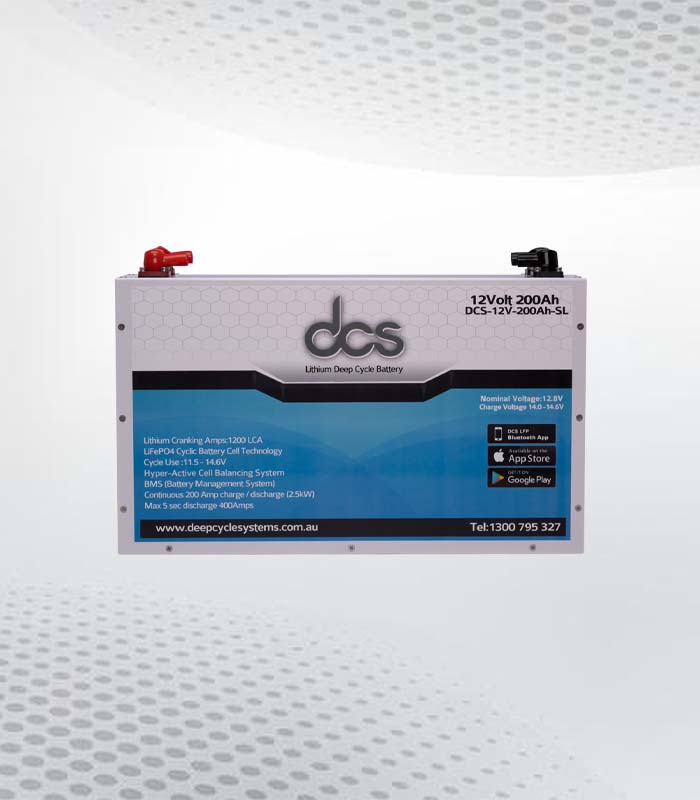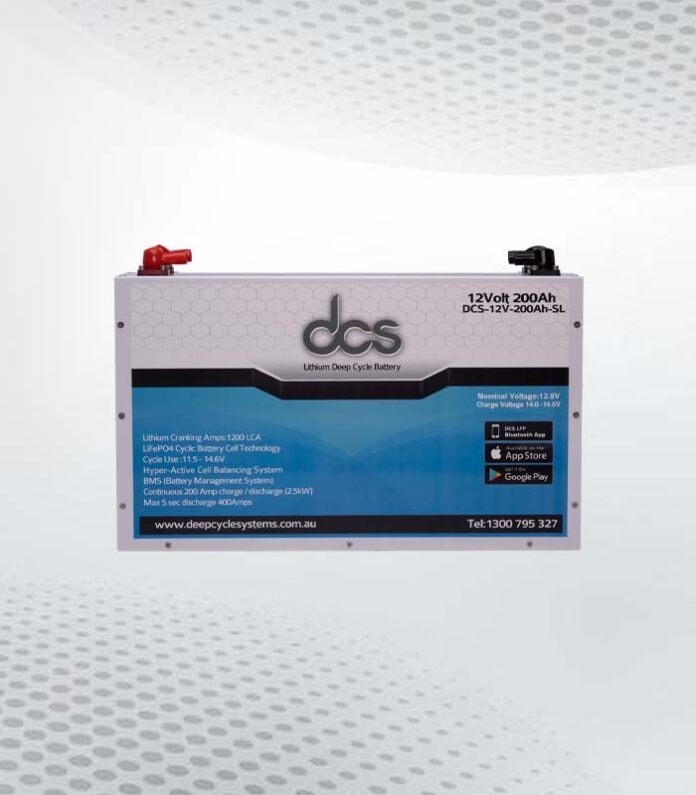As a boating enthusiast, I understand the importance of having a reliable deep-cycle marine battery. Whether you use your boat for fishing, cruising, or water sports, having the right battery can make all the difference in your marine adventures. In this comprehensive guide, I will walk you through everything you need to know about choosing the best deep cycle marine battery. From understanding the different types of batteries to maintenance tips and installation techniques, this guide will equip you with the knowledge to make an informed decision for your boating needs.
Understanding Deep Cycle Marine Batteries
Deep-cycle marine batteries are specifically designed to provide steady power over an extended period, making them ideal for powering electrical systems on boats. Unlike starting batteries, which deliver short bursts of high power to start the engine, deep-cycle batteries are built to withstand repetitive discharges and recharge without compromising performance. These batteries are essential for running accessories such as trolling motors, fish finders, and lighting systems on your boat.
Two primary types of deep-cycle marine batteries are flooded lead-acid batteries and sealed lead-acid batteries. Flooded lead-acid batteries are the traditional, more affordable option, requiring regular maintenance to check water levels and ensure proper ventilation. On the other hand, sealed lead-acid batteries, including AGM (Absorbent Glass Mat) and gel batteries, are maintenance-free and offer better resistance to vibration, making them suitable for rough marine conditions.
Types of Deep Cycle Battery Marine
Flooded Lead-Acid Batteries
Flooded lead-acid batteries, also known as wet cell batteries, are the most common type of Deep Cycle Battery Marine. These batteries consist of lead plates immersed in an electrolyte water and sulfuric acid solution. They require regular maintenance to check the water levels and ensure proper ventilation to prevent the buildup of explosive hydrogen gas.
Sealed Lead-Acid Batteries
Sealed lead-acid batteries, including AGM and gel batteries, offer a maintenance-free alternative to flooded lead-acid batteries. AGM batteries use a fiberglass mat to absorb the electrolyte, while gel batteries use a silica gel to immobilize the electrolyte. These sealed batteries are designed to be spill-proof, allowing for versatile installation options on boats without the risk of acid leaks.
Understanding the unique characteristics of each battery type will help you make an informed decision based on your boating requirements and maintenance preferences.
Factors to Consider When Choosing a Deep Cycle Marine Battery
Selecting the best deep-cycle marine battery for your boat involves considering several crucial factors to ensure optimal performance and longevity. Capacity, voltage, size, and construction are key elements to evaluate when making your decision. The battery’s capacity, measured in amp-hours (Ah), indicates the amount of energy it can store and deliver over time. A higher-capacity battery will provide more extended runtime for your electrical accessories, allowing for prolonged boating adventures without frequent recharging.
Additionally, the battery’s voltage must match your boat’s electrical system to ensure compatibility and efficient power delivery. It’s essential to verify the size and dimensions of the battery to guarantee a proper fit in your boat’s designated battery compartment. The construction and design of the battery, including its durability, resistance to vibration, and maintenance requirements, should also be considered to withstand the harsh marine environment.
Furthermore, understanding the discharge rate, also known as the C-rating, is crucial in assessing the battery’s ability to deliver power consistently without compromising its performance or lifespan. Considering these factors will enable you to decide and select the best deep-cycle marine battery that aligns with your boating needs.
 Maintenance Tips for Deep Cycle Marine Batteries
Maintenance Tips for Deep Cycle Marine Batteries
Proper maintenance is essential for maximizing the performance and lifespan of your deep-cycle marine battery. Regular inspections and preventive measures can prolong the battery’s service life and ensure reliable power for boating activities. One of the most critical maintenance tasks is keeping the battery clean and corrosion-free. Any buildup of dirt or corrosion on the battery terminals should be removed using a mixture of baking soda and water, followed by a thorough rinse and drying to prevent electrical issues.
If applicable to flooded lead-acid batteries, monitoring the battery’s water levels is crucial to prevent dehydration and maintain optimal performance. Adding distilled water as needed and ensuring proper ventilation will help preserve the battery’s overall health and efficiency. Additionally, securing the battery and minimizing excessive vibrations during boating operations can prevent structural damage and extend the battery’s lifespan.
Regularly testing the battery’s voltage and overall health using a multimeter or battery tester can provide valuable insights into its condition and help identify potential issues before they escalate. Implementing these maintenance tips ensures that your deep-cycle marine battery remains in top condition, providing reliable power for all your boating adventures.
Deep Cycle Marine Battery Charging and Discharging
Understanding deep-cycle marine batteries’ charging and discharging processes is fundamental to maintaining their performance and maximizing their lifespan. Proper charging techniques, including using a compatible marine battery charger and following the manufacturer’s guidelines, are essential for replenishing the battery’s energy levels without causing damage or overcharging. It’s crucial to monitor the charging process and avoid exposing the battery to extreme temperatures or prolonged periods of overcharging, which can lead to premature deterioration.
It’s important to avoid deep discharges below the recommended voltage threshold when discharging the battery, as this can negatively impact its longevity and overall capacity. Implementing a regular charging schedule and avoiding excessive discharge cycles will help preserve the battery’s health and ensure consistent power delivery for your boating activities. Understanding the optimal charging and discharging practices will enable you to maintain a healthy deep-cycle marine battery and maximize its performance on the water.
Installing and Replacing a Deep Cycle Marine Battery
Proper installation and replacement of a deep-cycle marine battery are essential for ensuring your boat’s safe and efficient operation. Before installing a new battery, it’s important to carefully review the manufacturer’s guidelines and specifications to ensure compatibility with your boat’s electrical system. Positioning the battery securely in its designated compartment and connecting the terminals following the correct polarity is crucial to prevent electrical issues and ensure a reliable power supply.
When replacing an old battery, it’s important to dispose of it responsibly and follow local regulations. Carefully disconnecting the old battery, removing it from the boat, and cleaning the battery compartment before installing the new battery will help maintain a safe and organized boating environment. Properly securing the new battery and thoroughly inspecting the connections and terminals will ensure a seamless transition and reliable power for your boating adventures.
Adhering to the recommended installation and replacement procedures will help you maintain a safe and efficient electrical system on your boat, ensuring that your deep-cycle marine battery performs optimally for years.
Testing the Health of a Deep Cycle Marine Battery
Regularly testing the health of your deep-cycle marine battery is essential for identifying any potential issues and ensuring reliable performance on the water. Using a multimeter or battery tester, you can measure the battery’s voltage and conductance to assess its overall condition and capacity. Performing a voltage test while the battery is at rest and under load can provide valuable insights into its charge level and ability to deliver power consistently.
Conducting a conductance test, which measures the battery’s ability to conduct electrical current, can help evaluate its internal resistance and detect any signs of degradation or damage. By monitoring these key indicators and comparing the test results to the manufacturer’s specifications, you can determine whether the battery operates within optimal parameters or requires maintenance or replacement.
Additionally, observing the battery’s physical condition, including any signs of corrosion, leakage, or structural damage, can provide valuable visual cues to assess its overall health. By incorporating regular testing into your maintenance routine, you can proactively address potential issues and ensure that your deep-cycle marine battery remains in peak condition for all your boating endeavors.
Comparison of Top Deep Cycle Marine Batteries
When exploring the best deep-cycle marine battery market, it’s essential to consider the features, performance, and reliability of various options to make an informed decision. Several leading brands offer a range of deep-cycle marine batteries, each with unique specifications and benefits. By comparing the top-rated batteries based on capacity, voltage, construction, and user reviews, you can narrow your options and select the best battery for your boat.
AGM batteries, known for their maintenance-free design and durability, are popular for boating enthusiasts seeking reliable power and longevity. Brands such as Optima, VMAXTANKS, and Odyssey offer high-performance AGM batteries tailored to marine applications, with features such as deep cycling capabilities, fast recharging, and resistance to vibration and shock.
Gel batteries, renowned for their spill-proof design and exceptional cycle life, are another compelling option for boaters looking for a reliable power source. Brands like Universal Power Group and Renogy provide a range of gel batteries designed to withstand the demands of marine environments, offering dependable performance and minimal maintenance requirements.
FAQs
Q: How long do deep-cycle marine batteries last?
A: The lifespan of a deep-cycle marine battery varies depending on factors such as usage, maintenance, and charging practices. With proper care and maintenance, a high-quality deep-cycle marine battery can last anywhere from 3 to 8 years, providing reliable power for boating activities.
Q: Can I use a regular car battery for my boat?
A: While a regular car battery can technically be used for limited electrical needs on a boat, it is not designed to withstand the deep cycling demands of marine applications. A dedicated deep-cycle marine battery is recommended to ensure consistent power delivery and longevity on the water.
Q: How should I store my deep cycle marine battery during the off-season?
A: When storing your deep cycle marine battery during the off-season, keeping it in a cool, dry place away from direct sunlight and extreme temperatures is essential. Properly charging the battery to its recommended state of charge and periodically checking its voltage levels will help maintain its health during storage.
Conclusion
In conclusion, choosing the best deep-cycle marine battery for your boat involves the following:
- Understanding the different types of batteries.
- Evaluating crucial factors.
- Implementing proper maintenance and charging practices.
By considering the capacity, voltage, size, and construction of the battery and its maintenance requirements, you can make an informed decision that aligns with your boating needs and preferences. Regular maintenance, testing, and proper installation techniques will help ensure that your deep-cycle marine battery delivers reliable power for boating adventures
This Article Was First Published On


